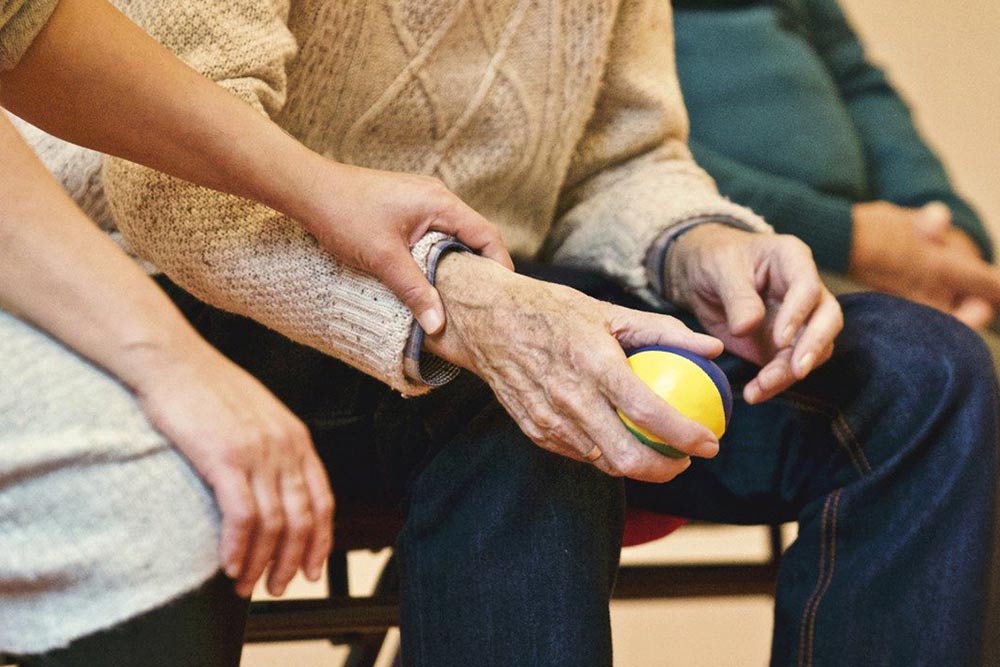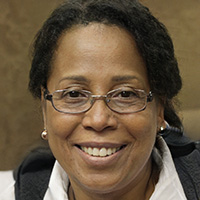Table of contents
- Tendonitis in the older adults: What is tendonitis
- Differences between tendonitis and tendonosis
- Symptoms of tendonitis in the older adults
- Tendonitis in the older adults: Locations
- Shoulder Tendonitis
- Older adults shoulder tendonitis exercises
- Wrist Tendonitis
- Among the most common causes of wrist tendonitis are:
- Patellar Tendonitis
- Tendonitis in the older adults: Goose leg tendonitis
- Prevention of tendonitis in older adults
Tendonitis in the older adults. Tendon injuries in the seniors are becoming more frequent. In some cases, this deterioration of the tendons may be asymptomatic. The patient may not notice anything. In other cases, it can cause considerable pain and discomfort.
In this article, the Nomenial team will outline the most common tendonitis, as well as its symptoms and treatment.
Tendonitis in the older adults: What is tendonitis
Tendonitis is the injury of a tendon, resulting in inflammation or irritation of the tendon.
Tendons are cords of tissue that attach muscles to bones, so they help muscles move bones.
The causes of this condition are mostly the following:
Injury caused during physical activity.
Overloading.
Degeneration of the tendon.
Aging.
The latter is an important risk factor. As we age, the tendon loses elasticity and increases the risk of deterioration.
Likewise, systemic diseases such as rheumatoid arthritis or diabetes, can also cause tendinitis.
The diagnosis of this condition is made on the basis of three factors: medical history, physical examination and imaging tests.
Differences between tendonitis and tendonosis
It is common to have confusion between both pathologies. Tendonitis is an acute inflammatory process that does not cause structural changes in the tendon, while tendonosis is an evolving tendonitis of a serious level in which there are already changes in the structure of the tendon, so it is a very difficult to solve.
Symptoms of tendonitis in the older adults
The main symptoms of tendonitis in older adults are
Pain and increased sensitivity around the tendon. This sensation is exacerbated in the areas near the joints.
Intensification of the discomfort and pain with the accomplishment of physical activities that imply the movement of the affected tendon.
Lack of strength.
The pain is worse at night.
Tendonitis in the older adults: Locations
Shoulder Tendonitis
Shoulder tendonitis is also called a rotator cuff injury.
The rotator cuff is a collection of muscles and tendons in the shoulder that plays a major role in stabilizing the shoulder. It plays a vital role in stabilizing the shoulder. The shoulder is the joint with the greatest variety and range of motion in the body.
Rotator cuff tendonitis is an inflammation of the muscles and tendons of the shoulder.
The causes of this injury are specific:
Lifting or dragging an object that is too heavy, or lifting it in an improper manner
Falls where the hand supports the body to limit the fall.
As noted above, aging increases the likelihood of hamstring injury.
The treatment that an older patient with shoulder tendinitis should follow depends on the level of severity of the injury. Generally, it will consist of physical therapy and rehabilitation.
Older adults shoulder tendonitis exercises
In order to progressively reduce the damage to the shoulder, the specialist will have our family member perform a series of routine physical exercises.
The first of these will consist of gentle stretching and warm-up exercises, with which he or she will gradually recover the mobility of the affected area.
An example of this type of stretching might be placing the palm of the painful arm over the opposite shoulder. With the unaffected arm, the elbow is pushed up and held for a few seconds.
After warming up and stretching the shoulder, our family member will continue with the exercises designed to improve mobility.
Thus, one of the most typical exercises is, with the body leaning forward, to support the healthy arm on a table, while the arm with discomfort we let it fall. Once in this position, we begin to make circular movements. (Of course, checking that no excessive effort is made that ends up causing more overload and damage to the affected tendon).
It is important, however, that these exercises are always prescribed and taught by a physical therapist. Then, at home, supervised by the caregiver. Because of their experience in caring for the older adults and the many conditions that come with aging, these professionals have the ability and skill to effectively manage and help perform the exercises that the medical specialist has prescribed.
Wrist Tendonitis
Wrist tendonitis is the inflammation of a tendon located in this part of the body.
The damage occurs in any of the many tendons that the wrist contains.
Within wrist tendonitis there is a specific injury known as Quervain’s tendonitis. This is a painful condition that occurs in the tendons of the wrist located next to the thumb and is one of the most common types of tendonitis of the extensor tendons that cross the wrist.
Despite the fact that the wrist has a great capacity to carry out an enormous variety of movements, it has little protection, so it is common for this type of injury to occur.
Among the most common causes of wrist tendonitis are:
Writing with pen and paper.
Making excessive use of the computer or tablet.
Performing repetitive physical tasks, such as sewing or household chores.
Practicing physical activities that require the use of the wrists (for example, walking for a long time on crutches or pushing the wheels of a wheelchair by yourself).
Tendon degeneration: as the tendon weakens, the repetition of even the slightest movement can cause the tendon to swell.
In addition to the physical therapy and rehabilitation with which our family member will recover the mobility and strength of the wrist, surgery is also frequent.
The doctor will value the positive aspects of practicing it (since it is not beneficial in all cases). If the patient receives surgery, it will be a minimally invasive procedure and will generally only require local anesthesia. The surgeon will simply make a small incision in the wrist and locate the affected tendon to act on it.
Patellar Tendonitis
Patellar tendonitis is an injury to the tendon that connects the kneecap to the tibia, which causes intense pain in the knee area, becoming more acute when walking.
As in the previous ones, the older adults must take extreme care in carrying out a good cure of this type of injury, since this can end up evolving towards an irreversible degeneration of the tendon.
Among the most common causes of tendonitis are overload and calcification. The latter, calcification, consists of the accumulation of calcium in a part of the body and tends to occur, more frequently than in other groups, in older people. This is due to the decreased blood supply as a result of the aging of the body. As we age, circulation worsens and tissues stop receiving all the oxygen they need, so calcium crystals begin to build up in them.
The type of treatment that is followed involves both physical therapy exercises and, in the acute phase, immobilization by means of a cast or, in chronic cases, surgery to remove the broken part of the tendon.
Tendonitis in the older adults: Goose leg tendonitis
The goose leg constitutes the confluence of the tendons of three muscles located in the knee (sartorius, graceful and semitendinosus).
The tendonitis of the leg of goose consists of the inflammation of the tendon of insertion of these three muscles.
It is usually frequent in, concretely, the older people who suffer overweight or arthritis of the knee.
Other frequent tendonitis are the injuries that take place in the tendons of the elbow, the foot, the arm and the ankle. All of them will manifest the same symptoms as the previous ones and if the treatment of this condition is important, its prevention is also fundamental.
For more information regarding different types of tendonitis please visit this site.
Prevention of tendonitis in older adults
If the tendonitis does not heal well, long-term problems as serious as the final rupture of the tendon can occur.
Before it happens, we can follow a series of guidelines to prevent it. Medical specialists summarize these recommendations in
Always carry out controlled physical activities and of an intensity proportional to the physical state and health of the older adults person who carries them out.
Routinely exercise all muscle groups to maintain flexibility and strength of bones and muscles.
Maintain good hydration. The recommended daily water consumption for an older adults person is between 1.5 and 2L of water per day to avoid suffering from dehydration.
Maintain an adequate diet. It is important that our older adults take all the necessary nutrients to develop their day to day.







